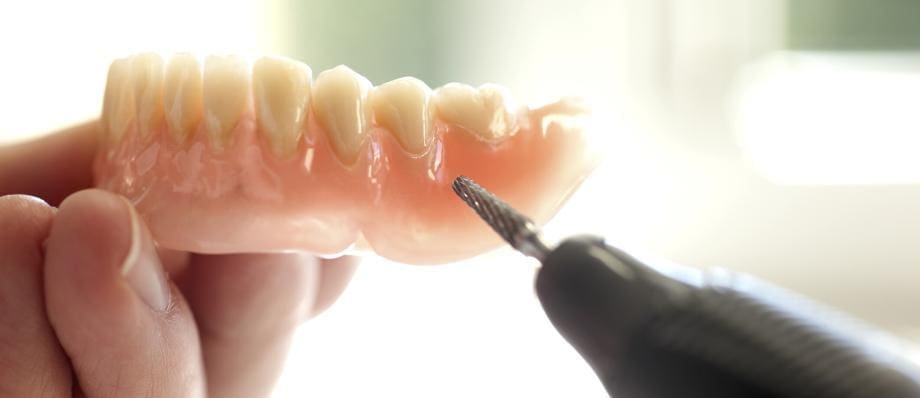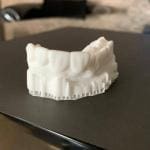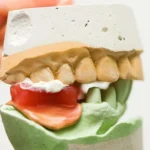Acrylics, a group of versatile and widely used polymers, play a significant role in modern dentistry. Acrylics have found extensive applications in the field of dentistry due to their favorable properties such as ease of manipulation, biocompatibility, and aesthetic versatility. This article aims to provide a comprehensive overview of the uses, types, fabrication techniques, advantages, and challenges associated with acrylics in dentistry.
Uses of Acrylics in Dentistry
- Dentures
- Orthodontic Devices
- Temporary Crowns and Bridges
- Custom Trays for Impression-Taking
Dentures
One of the primary applications of acrylics in dentistry is in the fabrication of dentures. Acrylic resin is commonly used to create the base of dentures, providing a strong, durable, and lightweight framework that can support artificial teeth.
Orthodontic Devices
Acrylics are used in the fabrication of various orthodontic appliances like retainers, space maintainers, and palatal expanders. These appliances help in aligning teeth and improving bite functionality.
Temporary Crowns and Bridges
Acrylics are often used to create temporary crowns and bridges for patients while their permanent restorations are being fabricated. These temporary restorations provide protection, aesthetics, and functionality until the final restoration is ready.
Custom Trays for Impression-Taking
Acrylics are utilized to create custom trays that aid in taking accurate impressions of a patient’s teeth. These impressions are crucial for designing and fabricating precise dental restorations.
Composition of Acrylics
Acrylic, a synthetic polymer, is primarily composed of polymerized units derived from acrylic or methacrylic acid derivatives. The key components of acrylic and their structure can be summarized as follows:
- Methyl Methacrylate (MMA)
- Polymerization
- Crosslinking Agents
- Initiators
- Modifiers and Additives
Methyl Methacrylate (MMA)
Methyl methacrylate is a crucial monomer in the composition of acrylic. Its molecular structure consists of a methacrylate group, which is composed of a methyl group (CH3) and an acrylic acid derivative. The chemical formula for MMA is CH2=C(CH3)COOCH3.
Polymerization
The polymerization process involves linking multiple MMA monomers together to form a long chain of repeating units, resulting in the polymer known as poly(methyl methacrylate) (PMMA). During polymerization, the carbon-carbon double bond in the methacrylate group undergoes addition reactions, forming the polymer backbone.
Crosslinking Agents
Crosslinking agents are often added to the polymerization mixture to create a network structure within the acrylic polymer. These agents link polymer chains together, enhancing the strength, stability, and durability of the final acrylic product.
Initiators
Initiators are compounds that initiate the polymerization process by initiating the formation of free radicals. These free radicals initiate the addition of MMA monomers, facilitating the growth of the polymer chains.
Modifiers and Additives
Acrylic compositions can be modified by incorporating various additives to achieve specific properties. These may include:
- Plasticizers
- Fillers and Reinforcements
- Pigments
- Stabilizers
- UV Absorbers
- Antioxidants
Plasticizers
To improve flexibility and workability of the acrylic material.
Fillers and Reinforcements
Such as silica or glass fibers to enhance mechanical strength.
Pigments
To provide color and improve aesthetics.
Stabilizers
To prevent degradation of the acrylic due to heat or light exposure.
UV Absorbers
To protect the acrylic from UV radiation, enhancing its longevity.
Antioxidants
To prevent oxidation and extend the life of the acrylic material.
By controlling the ratio of MMA monomers, the use of crosslinking agents, and incorporating appropriate modifiers and additives, the composition of acrylic can be tailored to meet specific requirements for various dental applications, ranging from dentures to orthodontic appliances. These compositional variations allow for the wide range of properties and functionalities that make acrylics versatile and useful in dentistry.
Types of Acrylics Used in Dentistry
- Methyl Methacrylate (MMA) Acrylic Resin
- Polymethyl Methacrylate (PMMA) Acrylic Resin
- Bis-Acryl Composite Resin
Methyl Methacrylate (MMA) Acrylic Resin
MMA is a widely used acrylic resin in dentistry due to its excellent properties such as easy manipulation, good aesthetics, and biocompatibility. It is commonly used in denture base materials.
Polymethyl Methacrylate (PMMA) Acrylic Resin
PMMA is a type of acrylic resin often used for temporary crowns, bridges, and orthodontic appliances. It provides good strength and esthetics for short-term dental solutions.
Bis-Acryl Composite Resin
Bis-acryl composite resins are commonly used in dentistry for provisional restorations. They offer improved mechanical properties and esthetics, making them suitable for temporary crowns and bridges.
Fabrication Techniques of Acrylic Dental Appliances
- Heat-Curing Technique
- Cold-Curing Technique
- Injection Molding Technique
Heat-Curing Technique
Heat-curing is a common method used to polymerize acrylic resins and fabricate dental appliances like dentures. The acrylic resin is initially shaped and then subjected to controlled heat for polymerization and hardening.
Cold-Curing Technique
Cold-curing involves using a chemical initiator or activator to polymerize the acrylic resin at room temperature. This technique is often used for chairside fabrication of temporary restorations.
Injection Molding Technique
In this technique, the acrylic resin is injected into a mold under pressure, resulting in a dense and void-free final product. Injection molding is often used for creating precise denture bases.
Advantages of Acrylics in Dentistry
- Aesthetics
- Biocompatibility
- Versatility
- Ease of Repair and Modification
Aesthetics
Acrylics provide a natural look and can be matched to the color and appearance of the patient’s existing teeth, enhancing overall aesthetics.
Biocompatibility
Acrylics used in dentistry are generally biocompatible, meaning they are well-tolerated by the body and do not cause adverse reactions.
Versatility
Acrylics can be easily manipulated and customized, allowing for a wide range of applications in dentistry, from dentures to orthodontic devices.
Ease of Repair and Modification
Acrylic dental appliances can be easily repaired or modified, ensuring a longer lifespan and adaptability to changes in the patient’s oral condition.
Challenges and Considerations
- Porosity and Microleakage
- Allergic Reactions
- Long-Term Durability
Porosity and Microleakage
Acrylics may have porosities or microleakage if not properly polymerized, leading to issues like bacterial growth and potential infection.
Allergic Reactions
Although acrylics are generally considered biocompatible, some individuals may have allergic reactions or sensitivities to certain components of acrylic resins.
Long-Term Durability
Acrylics, especially in temporary applications, may not provide the same long-term durability as permanent restorative materials like ceramics or metal alloys.
Future Trends and Innovations in Acrylics for Dental Applications
As technology and materials science continue to advance, the field of dentistry is witnessing exciting developments in acrylics that aim to overcome existing challenges and enhance the properties of these materials. Some of the anticipated trends and innovations in acrylics for dental applications include:
- Nanotechnology Integration
- Advanced Polymerization Techniques
- Bioactive Acrylics
- CAD/CAM Integration
- Hybrid Acrylic Composites
- 3D Printing of Acrylics
- Improved Monomer Composition
- Sustainability and Environmental Considerations
Nanotechnology Integration
Incorporating nanotechnology into acrylic formulations holds promise for improving the mechanical properties, biocompatibility, and esthetics of dental acrylics. Nanostructures can enhance the strength and reduce porosity, leading to more durable and biologically compatible dental appliances.
Advanced Polymerization Techniques
Researchers are exploring novel polymerization techniques, such as photopolymerization and microwave polymerization, to enhance the curing process of acrylic resins. These methods can improve the mechanical strength and reduce residual monomers, addressing issues like porosity and potential allergic reactions.
Bioactive Acrylics
The development of bioactive acrylics aims to promote oral health by releasing bioactive substances like fluoride, calcium, or antimicrobial agents. These substances can aid in preventing tooth decay and maintaining a healthy oral environment.
CAD/CAM Integration
Integrating computer-aided design and computer-aided manufacturing (CAD/CAM) technologies with acrylic fabrication processes allows for precise and customized dental appliances. CAD/CAM systems enable highly accurate milling or printing of acrylic materials based on digital impressions, improving overall fit and performance.
Hybrid Acrylic Composites
Hybrid acrylic composites, blending acrylics with other materials like ceramics or fibers, are being explored to achieve a balance between esthetics, strength, and durability. These composite materials can offer enhanced mechanical properties while maintaining a natural appearance.
3D Printing of Acrylics
3D printing or additive manufacturing of acrylics is gaining traction in dentistry. This technology allows for the creation of complex, patient-specific dental appliances with high precision and minimal material wastage.
Improved Monomer Composition
Research is focused on refining the composition of monomers used in acrylics to reduce allergic reactions and improve overall biocompatibility. The development of low-irritant monomers is a step towards ensuring the safety and well-being of patients.
Sustainability and Environmental Considerations
Efforts are underway to develop eco-friendly acrylic formulations that minimize environmental impact during production and disposal. Utilizing biodegradable or recyclable materials for dental acrylics can contribute to sustainable dental practices.
Conclusion
Acrylics have proven to be indispensable in modern dentistry, providing a versatile and adaptable material for a range of dental applications. From dentures to orthodontic devices, acrylics offer advantages such as aesthetics, biocompatibility, and ease of manipulation. While challenges like porosity and durability exist, ongoing research and advancements in material science aim to address these issues, further improving the role of acrylics in dentistry. Overall, acrylics continue to play a crucial role in enhancing dental care and improving the quality of life for patients.





